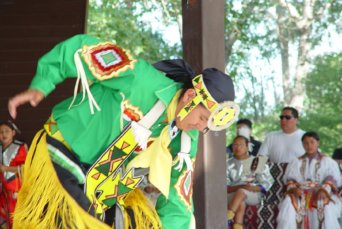- About
- Topics
- Picks
- Audio
- Story
- In-Depth
- Opinion
- News
- Donate
- Signup for our newsletterOur Editors' Best Picks.Send
Read, Debate: Engage.
The Canadian Truth and Reconciliation Commission (TRC) just released a new report about Canada’s residential schools. That itself may not seem interesting. But the system of these 130 schools - operated across Canada from the 19th Century until the 1996 - was very perfidious. Canadian aboriginals were required to attend these state-funded church schools for an inhuman reason. More than 150,000 First Nations, Metis and Inuit children were taken from their families and placed in these schools, in order to "kill the Indian in the child". According to TRC’s study "these measures were part of a coherent policy to eliminate Aboriginal people as distinct peoples and to assimilate them into the Canadian mainstream against their will."
Already on June 11, 2008, Prime Minister Stephen Harper issued an apology to the former students of Canada’s Indian residential school system, calling it a “sad chapter in our history.” That chapter is part of a broader story: one in which the Canadian government gained control over Aboriginal land and peoples, disrupted Aboriginal governments and economies, and sought to repress Aboriginal cultures and spiritual practices.
TRC chair Justice Murray Sinclair said even more than 6,000 residential school students died.Most were buried in unmarked graves on school property. The group made 94 recommendations for how to reconcile the injustices, including anti-racism training for Canadian public servants. But what does in the TRC report proposed reconciliation mean for survivors?
In the BBC article Survivors of Canada's 'cultural genocide' still healing survivors like Joseph Maud, who was separated from his family in the age of five in 1996 talk about their experiences. He remembers, when he would wet the bed, his nun in charge of his dormitory would rub his face in his own urine. "It was very degrading, humiliating. Because I'm sleeping in a dormitory with 40 other boys," he says. "It's bringing tears to my eyes right now just thinking about it."
The legacy of the residential school system remains today, as many Canadian aboriginals struggle to recover from generations of family separation. Aboriginals account for less than 5 percent of Canada's population, have higher levels of poverty and a lower life expectancy than other Canadians, and are more often victims of violent crime, addiction and incarceration.
Image: First Nation Canada, arthurbrasileiro.com.br
